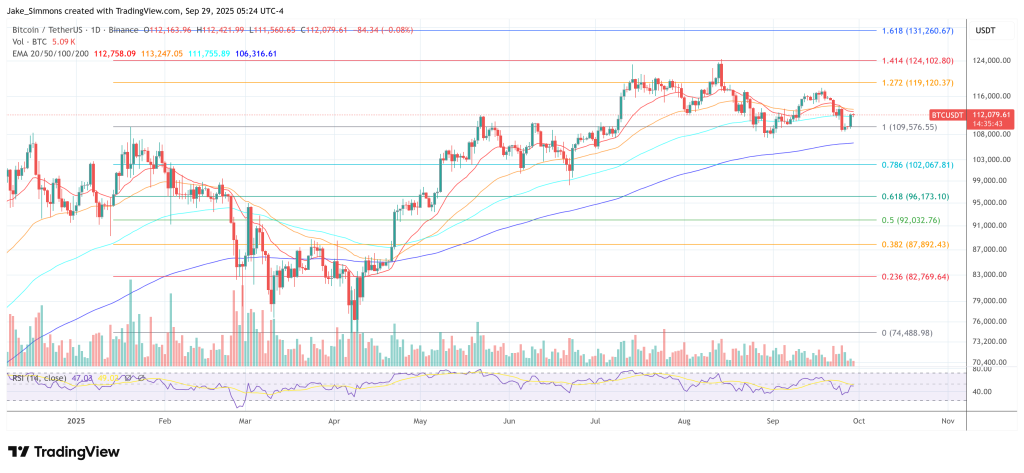Bitcoin’s subsequent main software program launch, Bitcoin Core v30.0, has reignited a fraught debate over what sorts of knowledge needs to be permitted to traverse and decide on the community—and who may bear obligation when that information is illicit.
On Monday, cryptography pioneer Nick Szabo weighed in with a pointed warning: modifications in v30.0 that calm down long-standing relay insurance policies for data-carrying transactions could heighten the authorized publicity of full-node operators by making objectionable content material simpler to retrieve and “view” with on a regular basis software program, thereby strengthening claims that operators had data of what they had been relaying or storing.
Bitcoin Core V30 Replace May Be A Authorized Catastrophe
Szabo framed the core situation in stark phrases: “What then occurs when full node operators develop into knowledgeable about unlawful content material on the blockchain? They then have data and this explicit precedent doesn’t shield them.” He added that the chance just isn’t abstractly technical however activates how non-technical decision-makers—legal professionals, judges, and jurors—understand what a node operator may fairly know or do.
“A counter argument is that unlawful content material in a contiguous commonplace format, thus readily viewable by commonplace software program, is extra more likely to impress legal professionals, judges, and jurors… than information that has been damaged up or hidden,” Szabo wrote, stressing that authorized outcomes can hinge much less on protocol nuance than on whether or not a “one-click” client app can floor the content material.
The flashpoint is Bitcoin Core v30.0’s reversal of a casual barrier round OP_RETURN—the script pathway traditionally used to connect small, prunable blobs of arbitrary information to transactions. For years Core’s default mempool coverage wouldn’t relay OP_RETURN payloads above ~80 bytes and restricted them to at least one output per transaction, a non-consensus “standardness” rule that deterred giant information postings with out banning them on the protocol degree.
“Charges shield the miners, however they don’t present sufficient disincentive to guard the total nodes. This has all the time been an issue, after all. However growing the OP_RETURN allowance will possible make this drawback worse. It additionally will improve authorized dangers,” Szabo wrote through X.
Starting with Bitcoin Core v30.0, the default coverage shifts: nodes will by default relay and mine transactions with bigger combination OP_RETURN information and allow a number of data-carrier outputs per transaction; the long-used -datacarriersize knob is being deprecated and repurposed, and now applies to the combination information throughout outputs. In impact, the default barrier comes down—although particular person node operators can nonetheless set stricter native limits.
Core builders and supporters of the change argue that channeling non-financial information into OP_RETURN—exactly as a result of it’s prunable—can scale back systemic hurt in contrast with stealthier encodings in non-prunable elements of transactions (e.g., fake public keys or different script hacks). As Szabo summarized the pro-Core place he has “heard”: permitting extra information through OP_RETURN “conceivably could scale back authorized dangers,” because the various (hiding information in locations that aren’t pruneable) is worse for the long-term burden on nodes.
Critics counter that stress-free defaults will normalize giant, contiguous information payloads that client apps can trivially render, making it far simpler for prosecutors to reveal that node operators had precise or constructive data of illicit materials. As Szabo put it, non-technical decision-makers will probably be “way more impressed” by unlawful content material {that a} acquainted app can retrieve than by content material requiring specialised instruments. That persuasion danger, he suggests, is on the coronary heart of operator legal responsibility.
The legality query sits awkwardly on the intersection of those technical defaults and real-world notion. A number of trade contributors argued in response to Szabo that arbitrary information can not realistically be stopped in any respect—whether or not through inscriptions in witness information, encodings in public keys, or OP_RETURN—making the coverage debate “fruitless.” Szabo didn’t dismiss that sensible actuality however insisted that format and user-experience matter in courtroom: if “an app like one on their telephones can retrieve the information,” that would weigh closely in opposition to a defendant Bitcoin node operator; if it requires obscure reconstruction instruments, the alternative.
What, then, is the treatment? Szabo floated two courses of mitigations, each imperfect. On the software program degree, he urged making it intentionally more durable for well-liked apps to retailer and retrieve generic media through both OP_RETURN or witness information—primarily nudging builders away from contiguous, human-readable codecs.
On the coverage degree, legislators may think about legal responsibility regimes that concentrate on the signers of offending transactions relatively than on relay/storage intermediaries resembling node operators. He additionally emphasised heterogeneity: as a result of authorized danger and the app panorama fluctuate by jurisdiction and over time, Bitcoin node operators want freedom to develop “messy, social/technical options,” with a watch on avoiding spillover into censorship of peculiar funds.
Notably, Szabo pressured that he has not taken a definitive aspect on the replace and is “exploring the problems,” even whereas cautioning that “authorized points like this are removed from easy, they usually lie far exterior the wheelhouse of most builders.” That, maybe, is essentially the most sobering takeaway as v30.0 approaches: the technical path could also be clear, however the authorized terrain it crosses is something however.
At press time, Bitcoin traded at $112,079.

Featured picture created with DALL.E, chart from TradingView.com

Editorial Course of for bitcoinist is centered on delivering completely researched, correct, and unbiased content material. We uphold strict sourcing requirements, and every web page undergoes diligent evaluation by our group of prime know-how specialists and seasoned editors. This course of ensures the integrity, relevance, and worth of our content material for our readers.




